Level 3 from ARIHANT PHYSICS Chapter 6 GEOMETRICAL OPTICS for Class 12
| Class 12 | PHYSICS |
| Chapter | GEOMETRICAL OPTICS |
| ARIHANT PHYSICS | Level 3 |
| Medium | English |
| Academic Year | 2023-2024 |
Question 1
In the Figure FE is a man of height H standing on a floor. E is eye of the man and F is his foot. The distance between eye and the head is negligible. A steel ball of radius r is suspended in front of him. The distance of the ball from the man is H and height of the centre of the ball from the floor is H2. It is given that r<<H. The surface of the ball acts like a mirror and the man sees his image in it. Calculate the angle subtended by the image at the eye of the man.
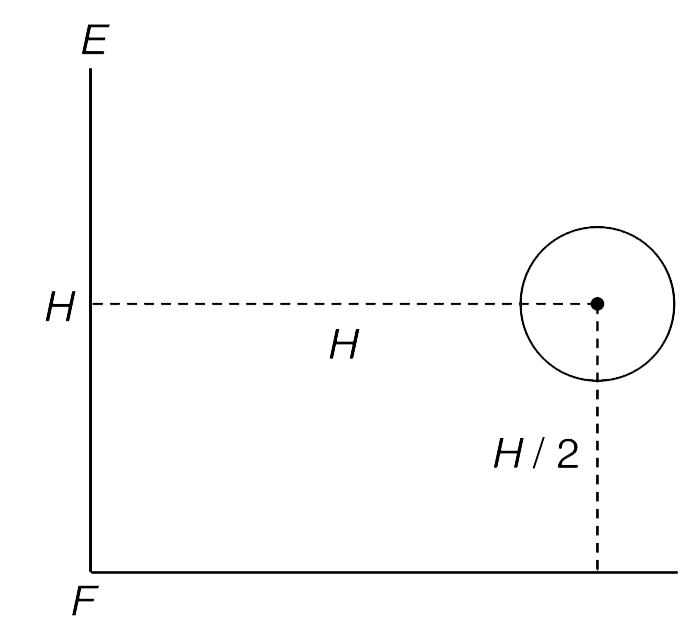 View Solution
View SolutionQuestion 3
The Figure (a) shows two media having refractive index μ and μ' with MM' as boundary. A ray of light AO is incident at the boundary and gets refracted.

In order to construct the refracted ray graphically a teacher suggests to draw a line PQ parallel to the incident ray AO. With P as centre, two circular arcs are drawn having radii kμ and kμ' where k is a positive number. The arcs intersect the line PQ at R and T respectively. From R, a line is drawn parallel to normal NN' and it intersects the other arc at S. Prove that the refracted ray is parallel to line PS. View SolutionQuestion 4
A stick is placed inside a hemispherical bowl as shown in Figure. The stick is horizontal and has a length of 2a. Eye of an observer is located at E such that it can just see the end A of the stick. A liquid is filled upto edge of the bowl and the end B of the stick becomes visible to the observer. Radius of the bowl is R. Find the refractive index (μ) of the liquid.
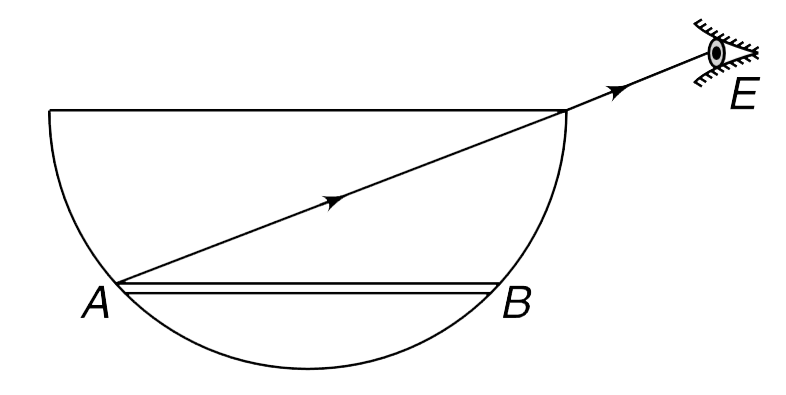 View Solution
View SolutionQuestion 5
The cross section of a prism is a regular hexagon. A narrow beam of light strikes a face of the prism just below the midpoint (M) of the edge AB. The beam is parallel to the top and bottom faces of the prism. Final the minimum value of refractive index of the material of the prism for which the emergent beam will be parallel to the incident beam.
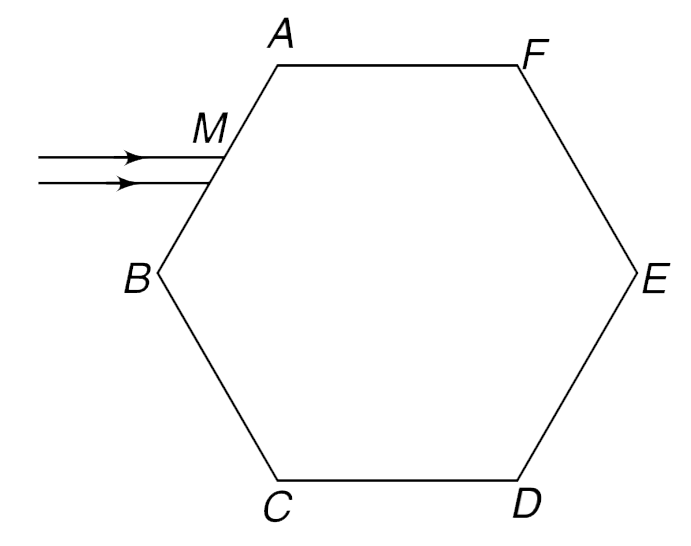 View Solution
View SolutionQuestion 6
A parallel beam of light is incident on a spherical drop of water (μ=4/3). Consider refraction of light at air-water interface, then reflection at water-air boundary (of course there will be refracted light energy in air as well), followed by refraction at water-air interface. Path of a typical ray refracted at A, then reflected at B and finally refracted at C has been shown in the Figure. Find the maximum value of angle δ. use sin−1√2027=60∘ and sin−1√512=40∘.
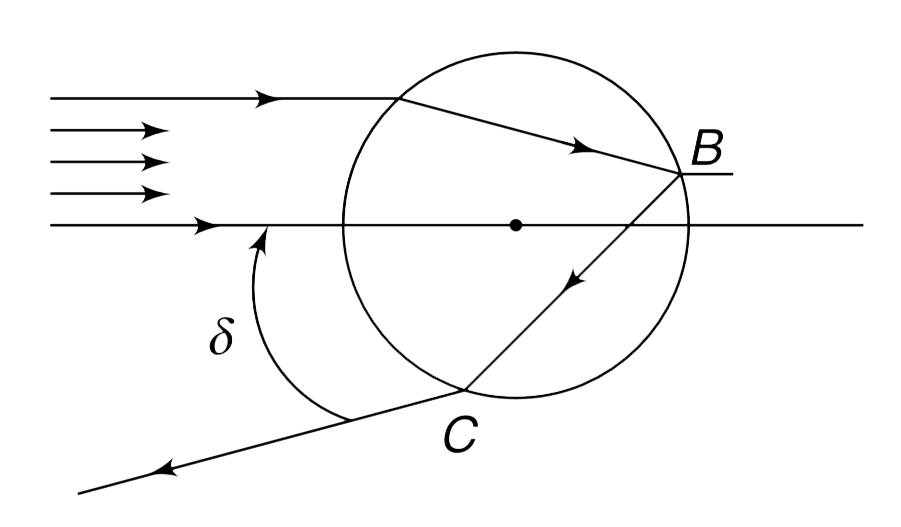 View Solution
View SolutionQuestion 7
An isosceles right angled triangular glass (μ=1.6) prism has a cavity inside it in the shape of a thin convex lens whose both surfaces have radius of curvature equal to 20 cm. The cavity has been filled with a transparent liquid of refractive index 2.4. S is a point source and σ is an opaque sheet having a small hole such that the source and the hole both lie on the principal axis of the lens. The small hole in the opaque sheet is just to ensure that only paraxial rays are incident on the optical system. However, the size of hole is large enough to neglect diffraction effects. Will the observers at P and Q be able to see the image of source S? Where is the image located?
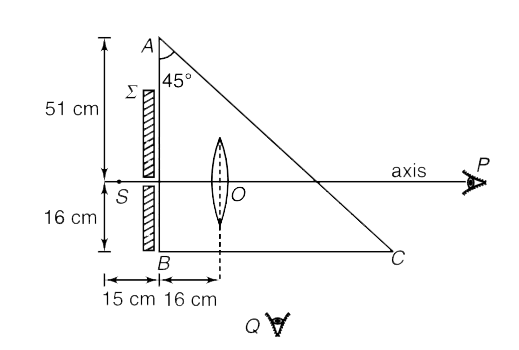 View Solution
View SolutionQuestion 8
Monochromatic light rays parallel to the principal axis (the x axis) are incident on a convex lens of focal length f. If the lens oscillates such that it tilts up to a small angle θ on either side of the y axis, then find the distance between the exterme positions of the image. Take secθ≈1+θ22 for small θ.
 View Solution
View SolutionQuestion 9
O is a small object placed at a distance D from the eye E of an observer. A concave lens of focal length f(∠D) is placed near to the eye and image of the object is viewed. Now the lens is moved towards the object O, away from the eye.
(a) Show that the angle subtended by the image at the eye first decreases and then increases as the lens is moved away from the eye.
(b) Find the distance of the lens from the object when the apparent size of image is smallest.
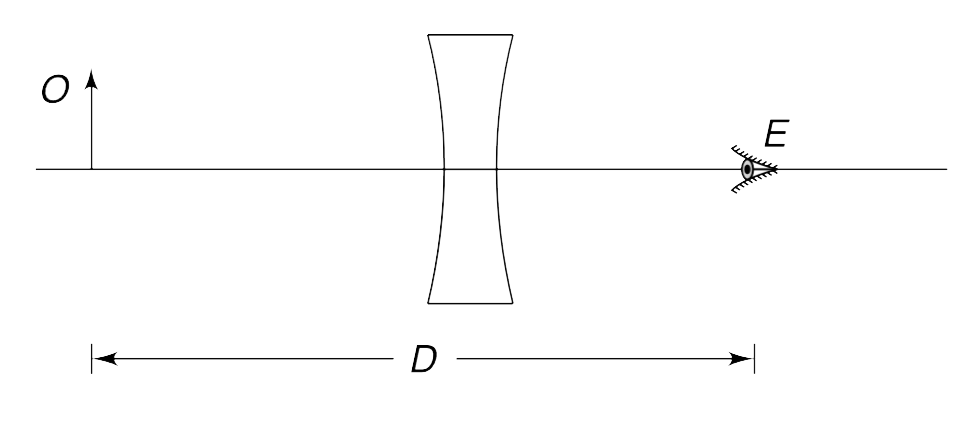 View Solution
View Solution
